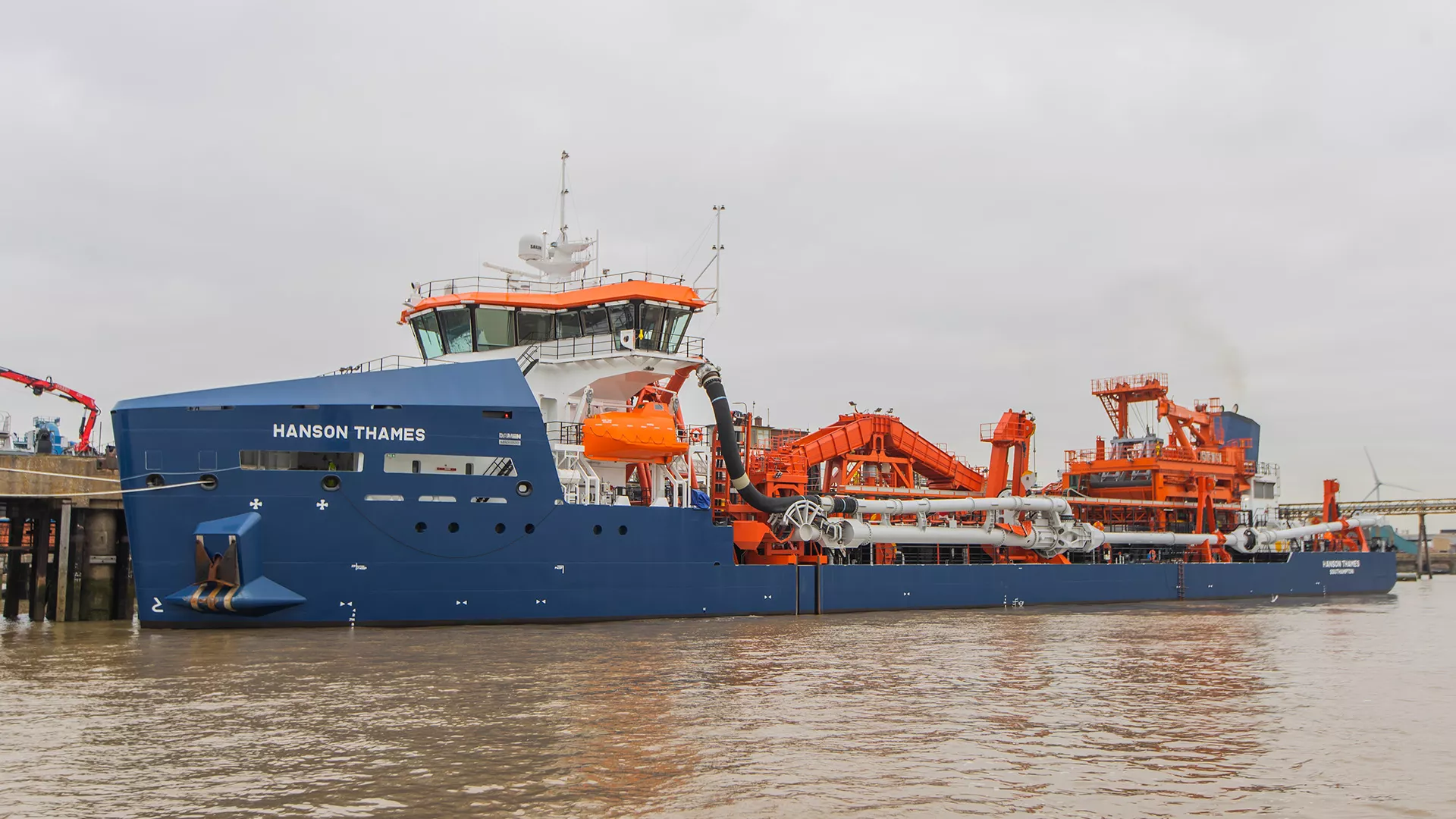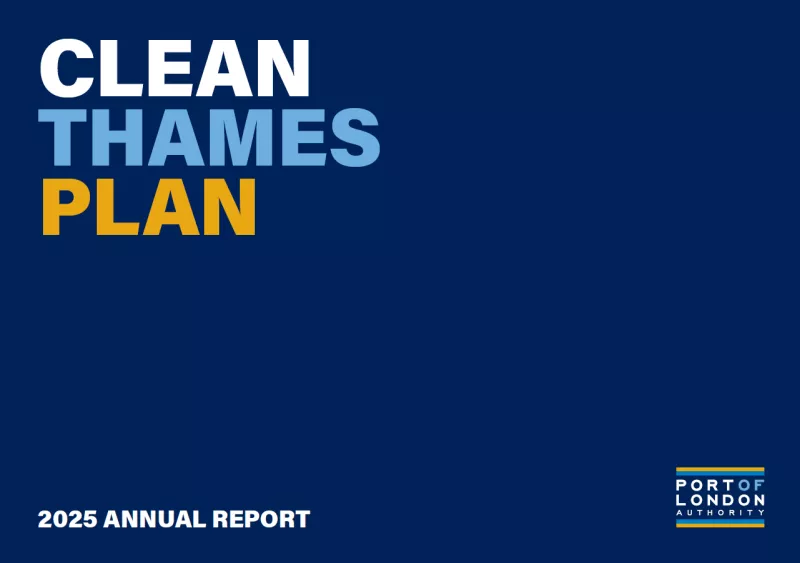Live Tides
NOTICES TO MARINERS
Charts & Surveys

Incident reporting
Life-threatening emergencies on the river:
Call 999 and ask for the Coastguard
For near miss, safety observations and incident reporting click below
Dredging

A dredging licence is required for any works involving dredging
Dredging is defined as including any operation to cleanse, scour, cut, deepen, widen, dredge or take up or remove material from the bed and banks of the Thames. Bed levelling, ploughing and hydrodynamic dredging fall within this definition.
Prior to any application being submitted for maintenance or capital dredging, applicants should submit a request for a sample plan. Samples may be required from the PLA and may also be required to inform the Marine Management Organisations Marine Licensing process. The applicant should provide details of the proposed dredge to both the PLA and MMO. Applicants will either be informed that no sample plan is required or, following discussion and agreement with the MMO, a sample plan provided.
The following should be provided with any sample plan request:
- Relevant parts of the application form (Word or PDF)
- A recent hydrographic survey with the proposed dredge area clearly marked. The dredge plan should include any side slopes and over dredge tolerances. PDF reference documents are available: example dredge plan and guidance on dredging terminology.
The requirements of this sample plan must be complied with and the results submitted with any subsequent application. Please see the guidance notes at the foot of this page for further information.
The following should be provided with any dredging application:
- Application form (Word or PDF)
- A recent hydrographic survey with the proposed dredge area clearly marked. The dredge plan should include any side slopes and over dredge tolerances. PDF reference documents are available: example dredge plan and guidance on dredging terminology
- Method statement (to be produced by the dredging operator)
- Results of sediment quality analysis undertaken within the last two years
- Description of the hydrodynamic characteristics of the river in the vicinity of the proposed works
- Details of any potential effects on nearby sites designated for nature conservation interest and on nearby berths
- Water Framework Screening Assessment
- Application processing fee
- Landowner consent if the area of riverbed to be dredged is not in the ownership of the PLA
Please submit completed applications to [email protected]
Additional information
This document contains information relevant to the integrity of the European Protected site on the Thames Estuary.
When managing decisions on maintenance dredging, the PLA needs to ensure a balance between meeting stakeholder expectations, discharging its responsibilities under environmental regulations, and manage safe operations in the Port of London in an efficient and cost-effective manner.
Guidance note: Sediment sampling requirements
In the UK the prevention of pollutants (such as certain metals and organics) into the marine environment is managed in several ways. This is mainly through the Water Framework Directive (WFD) 2000 and Marine and Coastal Access Act (MCAA) (2009).
The Water Framework Directive is a key piece of European legislation which relates to the protection of water quality and the ecological status of freshwaters and coastal waters. The WFD is implemented in the UK under the Water Environment (WFD) (England and Wales) Regulation 2003. The Water Environment Regulations incorporate a number of existing regulations including the Freshwater Fish Directive, Shellfish Waters Directive and Dangerous Substances Directive. The Water Environment Regulations enforces a set of criteria (Environmental Quality Standards, EQSs) for both individual discharges and the receiving waters. In this way, water quality is managed with a view to achieving acceptable standards.
The Marine and Coastal Access Act superseded two Acts (among others) which were previously important for the previous marine licensing system ie the Food and Environment Protection Act 1985 (FEPA) and the Coast Protection Act (CPA) 1949. FEPA licences mainly permitted construction within the marine environment, or the deposition of materials in the sea following environmental assessment. FEPA and CPA licences were replaced by marine licences under the MCAA.
The assessment of the effects of sea disposal is undertaken by the Centre for Environment, Fisheries and Aquaculture Science (CEFAS), based on OSPAR’s Dredged Material Assessment Framework. OSPAR guidance includes the number of sediment samples required for analysis. Sediment quality guidelines exist in the form of CEFAS Action Levels.
Involves release of sediment into the water column (and therefore any sediment-bound contaminants) and may also redistribute contaminants from the sediment into the water column. The quantity and rate of sediment release varies according to the dredging methodology. A trailer suction hopper dredger (TSHD) releases sediment via the overflow of low density water, whereas a water injection dredger causes all the dredged material to be mobilised into the lower water column, whilst the release from a backhoe is limited mainly to sediment falling from its bucket.
The type of sediment also affects the release rate of contaminants since fine sediment will be lost and dispersed to a greater extent than coarser sands. Sediment sampling helps to inform licencing procedures and to ensure that the dredging activity will not have a detrimental impact on the environment. Using the latest hydrographic survey, and information about the dredge (such as historic information, volumes, method and location) the PLA will work with berth operators and the MMO to come up with a sediment sample plan to ensure that the risks dredging poses to the environment of the Thames are mitigated against.
1. Background
The PLA considers that an assessment of the effects of dredging on water quality at the dredge site and the sediment quality of the receiving environment is an integral part of the licensing process.
In order to undertake this assessment, the PLA may require sediment samples to be taken, these samples may inform environmental assessments in order to comply with the Water Framework Directive and Habitat Regulation Directive requirements. Please see Guidance Note 1 for details of the PLA application process.
2. How to obtain your dredge sampling and analysis requirements from the PLA & MMO
Samples may be required from the PLA and may also be required to inform the Marine Management Organisations Marine Licensing process. The applicant should provide details of the proposed dredge to both the PLA and MMO. It is recommended that the dredging proposals and application process be discussed with the PLA and the MMO, and their input and advice sought, prior to submission of these documents.
3. Requesting a sampling plan
3.1. Requesting a sampling plan from the PLA
In order for the PLA to issue a sampling plan, the following documents must be submitted to [email protected]:
- A completed PLA dredge license application form.
- Clearly defined dredge area highlighted on the latest hydrographic survey, to a reasonable scale for the site.
N.B. The PLA may require further information on a case by case basis.
Occasionally the PLA will require samples, but the MMO will not. In this case, once appropriate information (detailed above) has been received and accepted by the PLA, the PLA will respond to the applicant with their sampling plan requirements.
3.2. Requesting a sample plan from the MMO
Where the MMO also require samples, the PLA will work with the MMO to issue a joint sample plan. The PLA and the MMO have different remits but endeavour to align their requirements for dredge sampling and analysis insofar as possible.
The applicant should submit a request for sampling and analysis requirements to the MMO should be via its online Marine Case Management System: https://marinelicensing.marinemanagement.org.uk/mmo/fox/live/MMO_LOGIN/login
If your dredge site requires sampling to inform both PLA and MMO licensing, please ensure you provide details of your MMO case officer and sample plan reference number to the PLAs environment team.
The aligned process of the PLA and MMO consists (in outline) of the following:
- The PLA forwards it’s dredge sample locations, specification and justification of sampling and analysis to the MMO,
- The MMO prepares its requirements in consultation with CEFAS, taking into account the PLA’s requirements,
- The MMO and the PLA each consults the other in finalising its requirements.
- Sample plan documents are issued to the applicant by the PLA & MMO.
4. PLA sample plan documents
PLA sample requirements will be composed of the following documents:
- Sampling Plan
- The sample positions will be marked on a plan.
- Rationale
- Reasoning behind the sampling requirements will be provided.
- The latitude and longitude of sample positions shown on the plan will be provided.
- The details of the depths that samples need to be taken.
- The details of analysis requirements for the samples.
5. PLA standard analysis requirements
The following points will be standard requirements on each sample plan:
- The full suite of determinants should be tested for (Appendix A).
- Bulked samples (where samples are combined with samples) will not be accepted.
- Although sample sites will have been selected with regard to local infrastructure, the sampling process should be carried out with full appreciation of the pipelines, tunnels, mooring and any other sensitive infrastructure at the site.
- The sample sites have been selected at positions which are most representative of where most material is to be removed.
It should be noted that where a joint sample plan is issued the PLA and MMO will work closely to ensure they are in agreement. The MMO have very specific guidelines on the laboratories that they will accept analysis from, the PLA is content with these requirements for dual sampling plans. Applicants should make sure that both sample plans are read carefully and adhered to, so that analysis results are accepted by both organisations.
Once results are received, sediment sample results should be provided to the PLA directly, as part of the dredge license application.
If you require any further information please email: [email protected]
Discover



